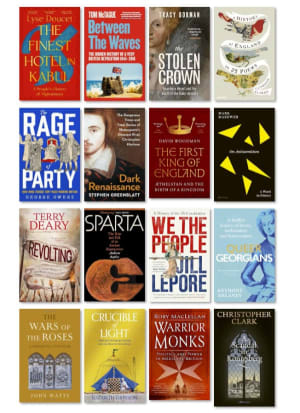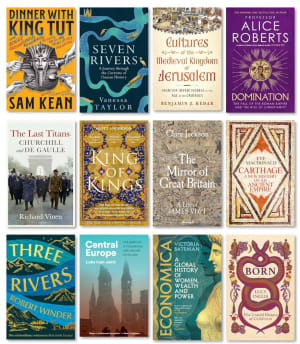How best to attract your attention? Tales of sexual debauchery: a priest encouraging his flock to disrobe and cavort about in the nude? Or perverse initiation rites involving brain-washed aristocratic daughters? - two of whom reportedly died of fatally high levels of sexual arousal. All underpinned by a bizarre cosmology involving two primordial eggs whose coupling forged reality as we know it.
What works to capture attention today worked just as well in early 19th century East Prussia, as Christopher Clark investigates in Scandal in Konigsberg.1
The scandal centred around two priests2 Johann Ebel and Heinrich Diestel who were accused of the aforementioned misdemeanors in 1835.
The truth of the matter is laid bare by the Clark who convincingly clears them of all charges (except for the primordial eggs). In fact the evidence suggests they were kind, selfless, pious men, who were dedicated to serving their communities.
Just how they came to be accused and then pronounced guilty is carefully examined in this parsimonious and beautifully packaged narrative.
The context for their prosecution is explained by Clark:
In the early nineteenth century, religion passed like a spiritual power surge across Europe, threatening on occasion to burn out the grid... the revolutionary era had shaken religion partly loose from the institutions of theological and ecclesiastical authority, allowing it to flow out into the world.
Christopher Clark, Scandal in Konigsberg
In this febrile environment small - or indeed imagined - issues could readily become magnified into larger matters of principle. Ebel and Diestel, the two priests, had unwittingly found themselves caught up in a culture war.
It is not too difficult to draw parallels with our own time. Or as Clark coyly puts it in the preface: “Resemblances to present-day persons and situations, though not intended, cannot be ruled out.”
A micro history
This book is a micro history focusing on the scandal, and the priest Ebel in particular. Like all great micro histories it is a little window that opens up a broader view on a particular time and place.
The view from this window is not long after the Napoleonic Wars, where the French Grand Armée had passed in triumph on its way to Russia (and had made itself hated by stealing food and livestock) and had passed back in miserable defeat, closely followed by the Russian army.
It is where the eminent philosopher Emmanuel Kant had walked up and down, contriving his tortuous ethical theories.
And it is the location and origin of the famous “bridges” problem in mathematics that I remember studying in school about two hundred years later: with seven bridges over the river, can you walk around the town crossing each bridge only once?3.
The time is one of religious upheaval. The French revolution has undermined established religion, and in an age of “rational thought” even some of Ebel’s fellow priests at priest school seem to consider belief in a biblical God optional and a bit old fashioned.
It is also a time of emerging mass media, with wide newspaper circulation and journalists fully prepared to jump into the gutter to increase it even further.
Clark deftly sketches this background - I got a strong and convincing sense of place when reading the book.
The foreground though is the character of and reactions to Johann Ebel, and Clark succeeds brilliantly in bringing him to life as a sympathetic figure.
Style guide
Scandal in Konigsberg is delightfully easy to read. It is a short book at 190 pages, but doesn’t skimp on any of the (sometimes juicy) details. For any Kurt Vonnegut fans out there... it is a bit like reading a Kurt Vonnegut novel, where, despite the lightness of the prose, every word carries weight.
My enthusiasm may partly be as a result of reading this straight after the monolithic and rather heavy going The Celts: A Modern History, but be that as it may, I feel like this is a great model for how to write a popular history book!
Downsides?
Honestly none, unless you come with a pre-existing and intense dislike of early 19th century German history.
Conclusion
It is a pleasant symmetry that while it is the lurid and sexually charged accusations that draw our attention to this story - just as Ebel and Diestel’s detractors had wanted - the story itself highlights their admirable qualities, memorialising them sympathetically as virtuous men when they would otherwise have faded into obscurity. A great book.
Book details
(back to top)- Title -
Scandal in Konigsberg
- Author -
Christopher Clark
- Publication date -
September 2025
- Publisher -
Allen Lane
- Pages -
192
- ISBN 13 -
978-0241767887
- Amazon UK -
- Amazon US -



